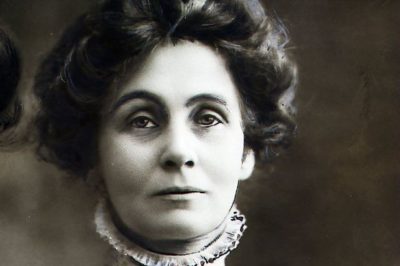Main Facts
Emmelin Pankhurst’s political activism played a key role in helping women win the right to vote in Britain. She was the leading figure of the British suffragette movement. She was born on 15th July 1858 and died a few weeks after British women achieved suffrage in 1928.
Early Involvement
She came from Manchester. Her ancestors had been involved in radical politics for generations. On December 1879, she became the spouse of Richard Pankhurst, a well-known advocate of women’s right to vote. They had five children together. In 1889, she founded the Women’s Franchise League to fight for the right of both married and unmarried women to vote. It was considered as a radical organization, because it also demanded equal rights for women with regard to inheritance and divorce.
Militant Activism
In 1903, five years after Richard’s death, she set up the Women’s Social and Political Union. The organization issued a newsletter, called Votes for Women. Its members were militant activists. Though initially their actions were non-violent, they ended up adopting property destruction such as window-smashing and even arson. Her daughters Sylvia and Chrystabel played an active role in the Union. Its members were found in prison several times; there, they went on repeated hunger strikes for improved living conditions. Pankhurst herself suffered from poor health as a result of this form of protest, and she was force-fed. In 1913, Union member Emily Davison died while protesting. The public was amazed at these militant deeds.
In 1913, the ‘Cat and Mouse Act’ was passed in England, which stipulated the release of hunger striking prisoners and their re-arrest after their convalescence. The First World War halted her militant actions. She devoted herself to the protection of her country from the ‘German Peril’.
Late Life, the Right to Vote, and Honors
In 1918, the Representation of the People Act granted the vote to women aged over 30, though there were quite many restrictions. In 1926, she became a candidate for Parliament with the Conservative Party. However, her health problems and a scandal involving her daughter Sylvia led to the failure of her campaign. British women over 21 were finally given the right to vote on July 2nd 1928. Two years after her death, her statue was raised in London’s Victoria Tower Gardens. In 1999, Time awarded her the title of one of the most important 100 people of the 20th century.



0 Comments